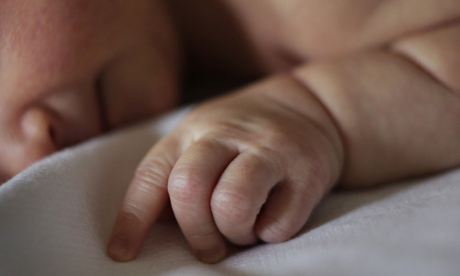
More women should give birth with only midwives present, including at home, because that is better for them and their babies than labour wards where doctors are in charge, the government's health advisers say on Tuesday.
Midwives should advise mothers-to-be who already have at least one child and whose latest pregnancy appears straightforward to opt for a midwifery-led unit (MLU) or a home birth when deciding where to have their baby, the National Institute for Health and Care Excellence is urging.
The 40% of women giving birth who are first-time mothers should also be advised to choose either location, Nice is recommending in draft guidelines to the NHS in England and Wales.
Both groups of women should select either location "because the rate of interventions is lower and the outcome for the baby is no different compared with an obstetric unit", Nice says.
If the NHS follows the new advice, it could lead to a huge shift in patterns of childbirth in which hundreds of thousands more women select those places instead of consultant-led obstetric units, where most births occur.
Currently just 2% of the 800,000 births a year in the UK take place at home.
One in four hospital births ends in a caesarean-section delivery and a further one in eight involves the use of either forceps or ventouse suction cups.
Nice said it had revised its advice on place of birth, which had been in force since 2007, in the light of fresh evidence about the safety of delivery in MLUs and at home. The only caveat it included was that midwives should tell first-time mothers that "if they plan birth at home there is a small increase in the risk of an adverse outcome for the baby".
The Royal College of Midwives (RCM) and the NCT, the parenting charity, welcomed Nice's proposals. However, maternity doctors voiced some unease.
The Royal College of Obstetricians and Gynaecologists (RCOG), which represents the UK's 10,000 maternity doctors, said it did not object to more women going through low-risk pregnancies having a home birth. But it warned that transport had to be available to take such women to hospital at short notice if they developed complications or needed pain relief.
The RCOG urged women at risk of complications to avoid freestanding midwife-led units, which are not located at hospitals, and use instead so-called alongside units, where those whose labour becomes problematic can get almost immediate help from doctors. It added that assessments as to which pregnancies are low-risk are not always accurate.
Prof Cathy Warwick, the RCM's chief executive, said: "The evidence shows that for low-risk women, giving birth in a midwife-led unit or at home is safe; indeed may be safer than hospital." Women who birthed there usually had higher satisfaction rates and a better birth experience than in hospitals, she added.
Nice said local NHS organisations should ensure that women in their area could choose between all four locations to give birth. Warwick called for more investment in midwife-led care and home births.
NCT chief executive Belinda Phipps said Nice's guidelines "are evidence-based and confirm what we have been saying for decades – that birth in a midwife-led unit or at home is a safe choice, especially for those expecting a second or later baby." But more midwives were needed to turn Nice's proposals into reality, she added.

